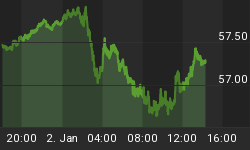A long-running global pandemic, a Suez Canal blockade, a deep freeze and pipeline cyber attack … all of it lays bare the fragility of the world’s supply chains.
Yet, all but the first were (or will be) resolved within days or weeks. But supply and demand issues stemming from pandemic disruption will loom large for some time.
We are running low on a long list of items that are now witnessing price spikes, and as economies reopen and recover, inflation is bound to set in making these six things in dangerously short supply.
#1 Copper
Due to the shift to green energy, demand for copper and other metals is soaring. Gaining more than 22% in 2020, copper has had its best year since 2017. This upward trend in demand for copper will only intensify in the coming years as the world expands its renewable power generation capacity.
Even as demand grows, there is also a shortage of new supply coming in.
According to some estimates, supply is likely to remain tight--or tighten further--until copper prices surge as much as 50 percent from current levels. President Joe Biden’s infrastructure plan could increase copper demand beyond anyone’s earlier expectations.
#2 Semiconductors
The global semiconductor shortage has disrupted auto production in the United States and elsewhere, and will most likely last two more years.
The semiconductor shortage has affected nearly every industry, but U.S. automakers have been especially hit hard, with some forced to slow or halt production at plants.
Last year, the pandemic caused auto manufacturers to suspend operations, with everybody predicting a slowdown in car sales to last but new car sales picked up in a hurry, causing a growing shortage of semiconductors.
#3 Lumber
Mandated lockdowns caused lumber sawmills to halt production while at the same time many Americans, trapped inside due the stay-at-home orders, rushed to the stores to buy lumber for projects to kill the time. Those two related things caused lumber inventory to plummet.
As a result, lumber prices have skyrocketed more than 300% since April last year, leading the National Association of Homebuilders to report that the lumber shortage has added at least $24,000 to the cost of a new home.
#4 Steel
Like lumber, lockdowns last year forced steel mills to halt the production. However, despite a recovery in demand, steel mills have been slow in ramping up production. Last year, inventories were drained to a four-year low while the demand now sits at its highest level in five years.
Steel prices are now hovering at around $1,500 a ton, up from $450 last year. That’s a record high that is nearly triple the 20-year average.
The Industry is now calling for the Biden administration to roll back tariffs on steel imposed by the previous administration, claiming it would ease supply constraints and weigh on steel prices.
#5 Coffee
Coffee farm closures last year and a current lack of workers in South America, which accounts for almost two-thirds of global output of arabica beans, caused low supplies and an increase in the price of coffee beans.
Farmers attempted to meet increased demand by dipping into leftover stockpiles from previous harvests but that proved insufficient.
Production has improved over the last couple of months, but getting coffee beans from South America to the United States has become extremely difficult due to a shipping container shortage. Now, coffee bean stockpiles have shrunk to a six-year low in the United States.
#6 Used Cars
With the above-mentioned chip shortages affecting new-car production, the inventory of used cars is running low, driving prices upwards.
An April note by UBS said that prices for used cars rose between 8.2% and 9.3%, the largest monthly price increase in 68 years of tracking. Sellers have posted the fastest rate of used car inventory turnover in the past six years.
By Michael Kern for Safehaven.com

















